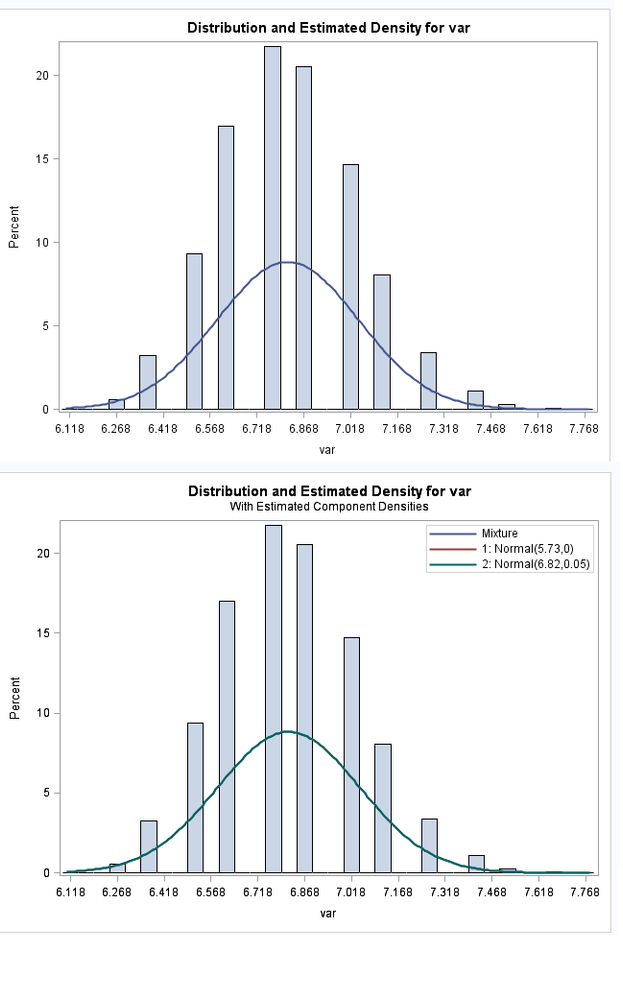- Home
- /
- Programming
- /
- SAS Procedures
- /
- PROC FMM with two overlapping distributions
- RSS Feed
- Mark Topic as New
- Mark Topic as Read
- Float this Topic for Current User
- Bookmark
- Subscribe
- Mute
- Printer Friendly Page
- Mark as New
- Bookmark
- Subscribe
- Mute
- RSS Feed
- Permalink
- Report Inappropriate Content
Hi,
I have data which constructs from two normal distributions (know property). And I am trying to find an estimate for the parameters of those distributions. I have been using proc FMM which works greatly if the two distributions are separatable by eye. However problems arise when the two distributions are close to each other. I understand that this might be a problem, but is there a way to force FMM to assume that when there is only one distribution to the eye, then it would try to find the distribution that should be mulitplied by 2 to get the distribution the data suggests? I have attached two output graphs which are from the FMM with k=1 and k=2 respectively. For some reason the K=2 finds a nonexisting distribution with mean of 5.73 and variance of 0??? I am using SAS 9.4

Accepted Solutions
- Mark as New
- Bookmark
- Subscribe
- Mute
- RSS Feed
- Permalink
- Report Inappropriate Content
I've written about some of these issues on my blog. Main takeways: if you have small samples, it might not be possible. However, the PROC FMM syntax enables you to specify "hints" about the number of components and even about which observations might belong to each component. So if you have domain knowledge you might be able to specify the PARTIAL= option or the PARMS statement and help PROC FMM determine the components.
- Mark as New
- Bookmark
- Subscribe
- Mute
- RSS Feed
- Permalink
- Report Inappropriate Content
I've written about some of these issues on my blog. Main takeways: if you have small samples, it might not be possible. However, the PROC FMM syntax enables you to specify "hints" about the number of components and even about which observations might belong to each component. So if you have domain knowledge you might be able to specify the PARTIAL= option or the PARMS statement and help PROC FMM determine the components.
- Mark as New
- Bookmark
- Subscribe
- Mute
- RSS Feed
- Permalink
- Report Inappropriate Content
Thank you for the answer. Indeed this method is possible but it was not that straight forward in my case. Got to say FMM is a great proc.
April 27 – 30 | Gaylord Texan | Grapevine, Texas
Registration is open
Walk in ready to learn. Walk out ready to deliver. This is the data and AI conference you can't afford to miss.
Register now and lock in 2025 pricing—just $495!
Learn the difference between classical and Bayesian statistical approaches and see a few PROC examples to perform Bayesian analysis in this video.
Find more tutorials on the SAS Users YouTube channel.
SAS Training: Just a Click Away
Ready to level-up your skills? Choose your own adventure.


